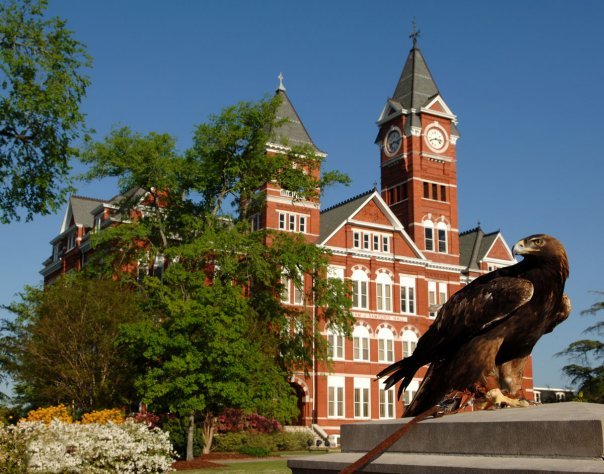
March 14-17, 2018, Auburn University

|
52nd Spring Topology and Dynamical Systems Conference March 14-17, 2018, Auburn University |
Topology Atlas
Submitted abstracts
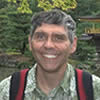
| Mladen Bestvina, University of Utah
Title: PL Morse theory and application The goal of the talk is to introduce PL Morse theory. This theory is concerned with describing the homotopy type of a simplicial complex equipped with a real valued PL function, based on the local information at the vertices. I will also give some applications, coming from my paper with Noel Brady (published some time ago). For example, I intend to explain why the kernel of the homomorphism F2 x F 2 → Z that sends all 4 standard generators of the product of two free groups of rank 2 to a generator of Z is finitely generated but not finitely presented. The talk will also serve as a starting point for a workshop, where further applications by others in geometric group theory will be given. |
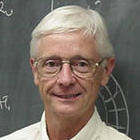
| John Bryant, Florida State University
Title: Some Counterexamples to the Bing-Borsuk Conjecture An n-dimensional ANR homology manifold X is resolvable if there is a topological n-manifold M and a cell-like map f: M → X. A space X has the disjoint disks property, or DDP, if every two maps of a 2-cell into X can be approximated by maps with disjoint images. A space X is topologically homogeneous, if, for every pair of points x, y ∈ X, there is a homeomorphism h: X→ X such that h(x) = y. We present a variant of the construction of non-resolvable homology n-manifolds, n ≥ 6, by Bryant-Ferry-Mio-Weinberger (Topology of homology manifolds, Ann. of Math. 143 (1996)) that produces a class of homology manifolds with the DDP that are topologically homogeneous. We also prove that every n-dimensional ANR homology manifold, n ≥ 6, is the cell-like image of a space in this class. In particular, for every n ≥ 6 and every integer k ∈ 1 + 8Z there is a topologically homogeneous homology n-manifold X with the DDP such that X is homotopy equivalent to the n-sphere Sn and the Quinn resolution obstruction σ(X) = k. If k ≠ 1, then X is not resolvable; hence, is a counterexample to a conjecture of R.H. Bing and K. Borsuk (Some remarks concerning topologically homogeneous spaces, Ann. of Math. 81 (2) (1965)) that a topologically homogeneous euclidean neighborhood retract is a topological manifold. We do not know whether every connected homology n-manifold, n ≥ 6, with the DDP is topologically homogeneous. |

| Suddhasattwa Das, Courant Institute of Mathematical Sciences, New York University
Title: Delay-coordinate maps and the spectra of Koopman operators. The Koopman operator associated to every invertible dynamical system is an unitary operator acting on the space of square-integrable functions. It provides an alternate method of studying many properties of the dynamics, like mixing, ergodicity, forecasting etc, as a linear operator. Koopman eigenfunctions represent the non-mixing component of the dynamics. They factor the dynamics, which can be chaotic, into quasiperiodic rotation on tori. Here, we describe a kernel integral operator acting on square-integrable functions, which has the property of commuting with the Koopman operator and thus has common eigenfunctions. This is constructed by incorporating infinitely many delay coordinates in the kernel of this integral operator. As a by product, it also annihilates the continuous spectrum and thus maps into the subspace associated to the pure-point spectrum. This enables efficient approximation of Koopman eigenfunctions from high-dimensional data in systems with point or mixed spectra, using just the information provided by a single, generic trajectory. |

| Albert Fathi, Georgia Tech
Title: Recurrence on abelian cover. Application to closed geodesics in manifolds of negative curvature. If h is a homeomorphism on a compact manifold which is chain-recurrent, we will try to understand when the lift of h to an abelian cover (i.e. the covering whose Galois group is the first homology group of the manifold) is also chain-recurrent. This is related to the proof by John Franks of the Poincaré-Birkhoff theorem. It has new consequences on density of classes of closed geodesics in a manifold of negative curvature. |
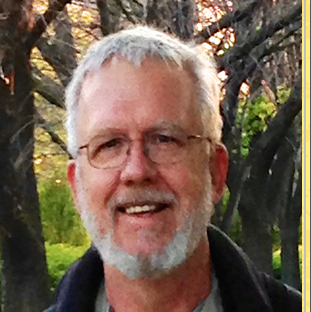
|
Steve Ferry, Rutgers University
Title: Some Counterexamples to the Bing-Borsuk Conjecture This will be a lead-in to John Bryant's talk. Topics will include as many as possible of the following:
1. Classical characterizations of the 1- and 2-spheres. 2. Sobering examples in dimension 3. S3/Fox-Artin arc. 3. Definition and properties of ANR homology manifolds. 4. Cannon's Conjecture and Edwards' Theorem. 5.Definition of the Quinn invariant and introduction to controlled topology. 6. Controlled surgery exact sequence. 7. Bryant-Ferry-Mio-Weinberger construction of counterexamples to Cannon's Conjecture in the special case of the sphere (or torus). 8. Statement of new results. |
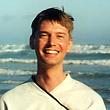
| Paul Gartside, University of Pittsburgh
Title: Compact sets - order, topology and mirrors We investigate the order and topological structure of compact subsets of separable metric spaces. |
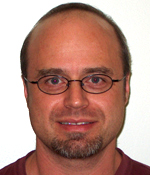
| Boris Goldfarb, University at Albany, SUNY
Title: Topology in Data Science This is a survey of some established applications of algebraic topology to data science. Persistent homology leverages linear algebra to compute geometric features of discrete, even if large, data sets by the use of Vietoris-Rips complexes associated to a range of parameter values. I will draw some parallels with the subject of Jerzy Dydak's workshop at the conference. Another application of topology is based on the Mapper algorithm. These are some methods that came from topology and are finding a rapidly increasing number of practical applications. I will make a point that behind these accomplishments and beyond them there is a valuable collection of instincts and habits that allow topologists to generate new ideas in statistical data science. |
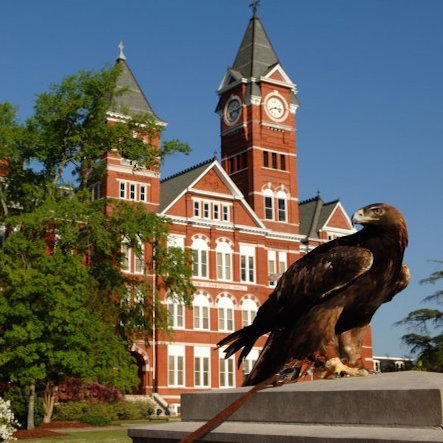
| Kazuhiro Kawamura, University of Tsukuba
Title: Hochschild cohomologies of Lipschitz algebras over compact Riemannian manifolds. We discuss Hochschild cohomologies (in the sense of Helemskii and Johnson) of algebras of Lipschitz functions on compact Riemannian manifolds. A theorem of Ogneva states that the global homological dimension of the algebra of smooth functions of a smooth manifold M is equal to the dimension of M, while the algebra of Cn-functions has the infinite global homological dimension, as was proved by Pugach and Kleshchev. It follows from our result that the global dimension of Lipschitz algebras over compact Riemannian manifolds, or more generally compact metric spaces with the unique local-geodesics property, is infinite. Infinite dimensionality of cohomologies of Lipschitz algebras with some coefficient modules will also be discussed. |

| Danuta Kołodziejczyk, Warsaw University of Technology
Title: Polyhedra with finite depth.
Given a (finite) polyhedron P, consider all finite chains of different homotopy types P ≥ X1 ≥ X2 ≥ ... ≥ Xk, where ≥ denotes homotopy domination. The depth of P, D(P), is the upper bound of the lengths of all such chains for P (this notion was introduced by K. Borsuk). One may ask, is it true that every polyhedron has finite depth? The answer is known to be positive for all polyhedra with virtually-polycyclic fundamental group (DK, 2007), and clearly for 1-dimensional polyhedra. (On the other hand, as we showed earlier, there exist (finite) polyhedra homotopy dominating infinitely many different homotopy types.) We prove that for some classes of polyhedra this problem reduces to the same question for the fundamental group π1(P) with retractions. We will present some positive results and interesting related problems (also for finitely presented groups) which remain unsolved. |

| David Lipham, Auburn University
Title: Compactifying connected spaces: 2 problems.
This talk will address dense embeddings of two types of connected spaces into compact Hausdorff spaces. Through examples and partial results, we will explore dual problems on preserving irreducibility and destroying cut points:
Let X be a connected Tychonoff space.
Problem 1. If X is irreducible between every two of its points, is there a compact Hausdorff space Y=X that is irreducible between some two of its points? Problem 2. If every point of X is a cut point, is there some point x in X and a compact Hausdorff space Y=X such that Y\{x} is connected? |

| Sara Maloni, University of Virginia
Title: Polyhedra inscribed in quadrics and their geometry.
In 1832 Steiner asked for a characterization of polyhedra which can be inscribed in quadrics. In 1992 Rivin answered in the case of the sphere, using hyperbolic geometry. In this talk, I will describe the complete answer to Steiner's question, which involves the study of interesting analogues of hyperbolic geometry including anti de Sitter geometry. Time permitting, we will also discuss future directions in the study of convex hyperbolic and anti de Sitter manifolds. (This is joint work with J. Danciger and J.-M. Schlenker.) |
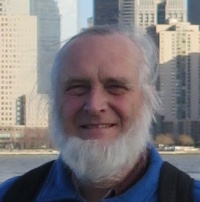
|
Michał Misiurewicz, Indiana University-Purdue University Indianapolis
Title: Lozi-like maps. We define a broad class of piecewise smooth plane homeomorphisms which have properties similar to the properties of Lozi maps, including the existence of a hyperbolic attractor. We call those maps Lozi-like. The basic structure of such a map is determined by the set of kneading sequences, or each of the two equivalent objects: the folding pattern and the folding tree. |
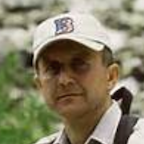
| Janusz Prajs, California State University at Sacramento
Title: Open Problems in the Study of Homogeneous Continua
In this talk, I will present and discuss published and unpublished open problems and partial results I have encountered in my study. Most of these problems are in the area of homogeneous continua. |
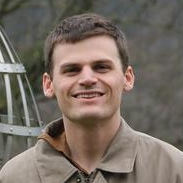
| Kevin Schreve, University of Michigan
Title: Action dimension of simple complexes of groups.
The geometric dimension of a discrete group G is the minimal dimension of a model for the classifying space BG. The action dimension of G is the minimal dimension of a manifold model. I will talk about some computations of the action dimensions for certain complexes of groups, including Artin groups, graph products, and fundamental groups of complex hyperplane complements. This is all joint work with Mike Davis and Giang Le. |
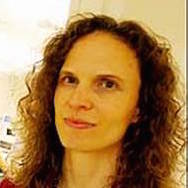
| Jennifer Schultens, University of California at Davis
Title: Surfaces in Seifert fibered spaces. Seifert fibered spaces are a family of manifolds whose members are classified by a finite set of invariants. The structure of these manifolds allows us to concretely describe surfaces embedded in them. We will discuss two types of surfaces in Seifert fibered spaces (incompressible surfaces and Heegaard surfaces), their interaction with each other, and new results concerning isotopy of these types of surfaces. |
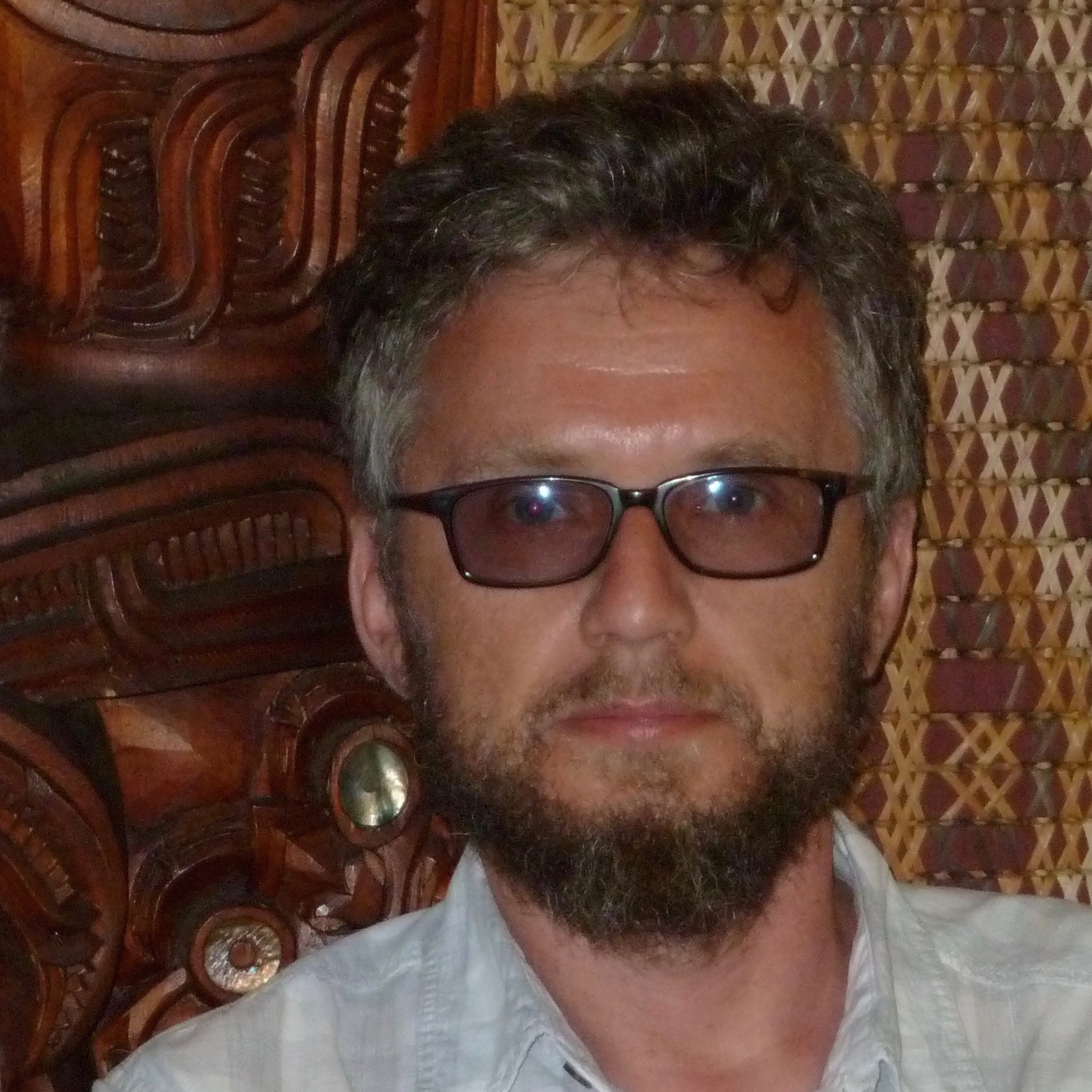
| Sławomir Solecki, Cornell University
Title: Compact Spaces and Logic Fraïssé theory is a method in classical Model Theory of producing canonical limits of certain families of finite structures. For example, the random graph is the Fraïssé limit of the family of all finite graphs. It turns out that this method can be dualized, with the dualization producing projective Fraíssé limits, and applied to the study of compact metric spaces. I will describe recent results, due to several people, on connections between projective Fraïssé limits and the structure of some canonical compact spaces and their homeomorphism groups (the pseudoarc, the Menger curve, the Lelek fan, simplexes with the goal of developing a projective Fraïssé homology theory). |
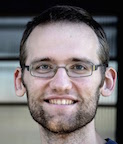
| Balázs Strenner, Georgia Tech
Title: Number-theoretic and algorithmic aspects of surface homeomorphisms.
The first half of the talk will be a survey of results connecting surface homeomorphisms with number theory. The starting point of these connections is the fact that many surface homeomorphisms have an associated stretch factor which is an algebraic integer. In the second half, we will discuss algorithms to compute the stretch factor (and other data corresponding to surface homeomorphisms). The talk will not assume much background in either topology or number theory, so it should be accessible to a broad audience. |
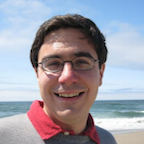
|
Michael Usher, University of Georgia at Athens
Title: Symplectic embeddings of ellipsoids into polydisks.
Symplectomorphisms describe the possible evolutions of the phase space of a conservative physical system according to the laws of classical mechanics. Gromov's non-squeezing theorem from 1985 showed, surprisingly, that a ball in R2n can be embedded into a cylinder by a symplectomorphism only if the radius of the cylinder is at least the radius of the ball, and over time it has become clear that the question of when one region in R2n embeds into another is extremely delicate, with connections to complex algebraic geometry and elementary number theory. I will discuss some what is known about which four-dimensional ellipsoids symplectically embed into which products of disks, including some new results showing that qualitative features of the answer depend sensitively on the ratio of the areas of the disks. |
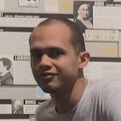
| Bena Tshishiku, Harvard University
Title: Cohomology of arithmetic groups and characteristic classes of manifold bundles.
A basic problem in the study of fiber bundles is to compute the ring H*(BDiff(M)) of characteristic classes of bundles with fiber a smooth manifold M. When M is a surface, this problem has ties to algebraic topology, geometric group theory, and algebraic geometry. Currently, we know only a very small percentage of the total cohomology. In this talk I will explain some of what is known and discuss some new characteristic classes (in the case dim M >>0) that come from the unstable cohomology of arithmetic groups. |
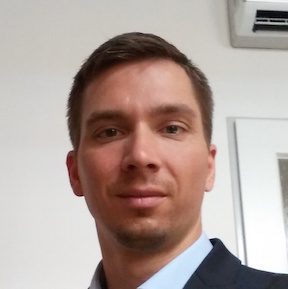
| Benjamin Vejnar, Charles University, Praque
Title: Fixed points of continuous group actions on compact metrizable spaces.
In the late 60's Boyce and Huneke independently solved a twenty years old question of Isbell by giving an example of a pair of commuting continuous functions of the closed unit interval into itself which do not have a common fixed point. It follows that the action of a free commutative semigroup with two generators need not to have a fixed point when acting on the closed interval.
In this talk we study the conditions under which every continuous action of a topological (semi)group on a continuum (that is usually one-dimensional in its nature) has a fixed point. We are dealing e.g. with commutative or compact (semi)groups and with the classes of continua including dendrites, dendroids, uniquely arcwise connected continua or tree-like continua. |

| Susan Williams, University of South Alabama
Title: Graphs, Links and Mahler Measure The relationship between plane graphs and knots is both well known and striking. Plane graphs with edge weights ±1 correspond to arbitrary link diagrams via the medial construction. Combinatorial graph invariants can yield knot invariants. We define the complexity of the graph to be the count of spanning trees, with each tree counted as the product of its edge weights. Then the complexity of a plane graph coincides with the determinant of the associated link. An infinite graph G is d-periodic if it has a free Zd-action by graph automorphisms with finite quotient graph. For these a Laurent polynomial invariant L(x1, ..., xd) can be defined. Its Mahler measure is the exponential growth rate of the complexities of an expanding sequence of finite quotients of G. When G is a plane 1-periodic graph, or 2-periodic graph with all edge weights 1, the Mahler measure is a growth rate of link determinants. Lehmer's question, an 80-year-old open question about the roots of monic integral polynomials, is equivalent to a question about complexity growth of edge-weighted 1-periodic graphs. We do not know if the graphs can be assumed to be planar. |
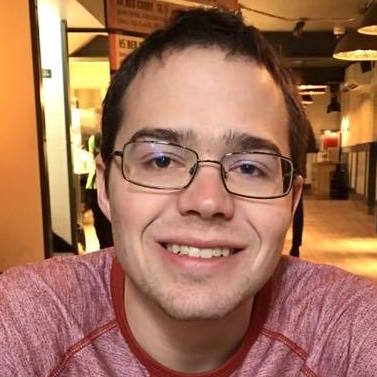
| Andy Zucker, Carnegie Mellon University
Title: A new proof of a recent theorem of Ben-Yaacov, Melleray, and Tsankov.
We provide a new proof of a recent theorem of Ben-Yaacov, Melleray, and Tsankov. If G is a Polish group and X is a minimal, metrizable G-flow with all orbits meager, then the universal minimal flow M(G) is non-metrizable. In particular, we show that given X as above, the universal highly proximal extension of X is non-metrizable. |